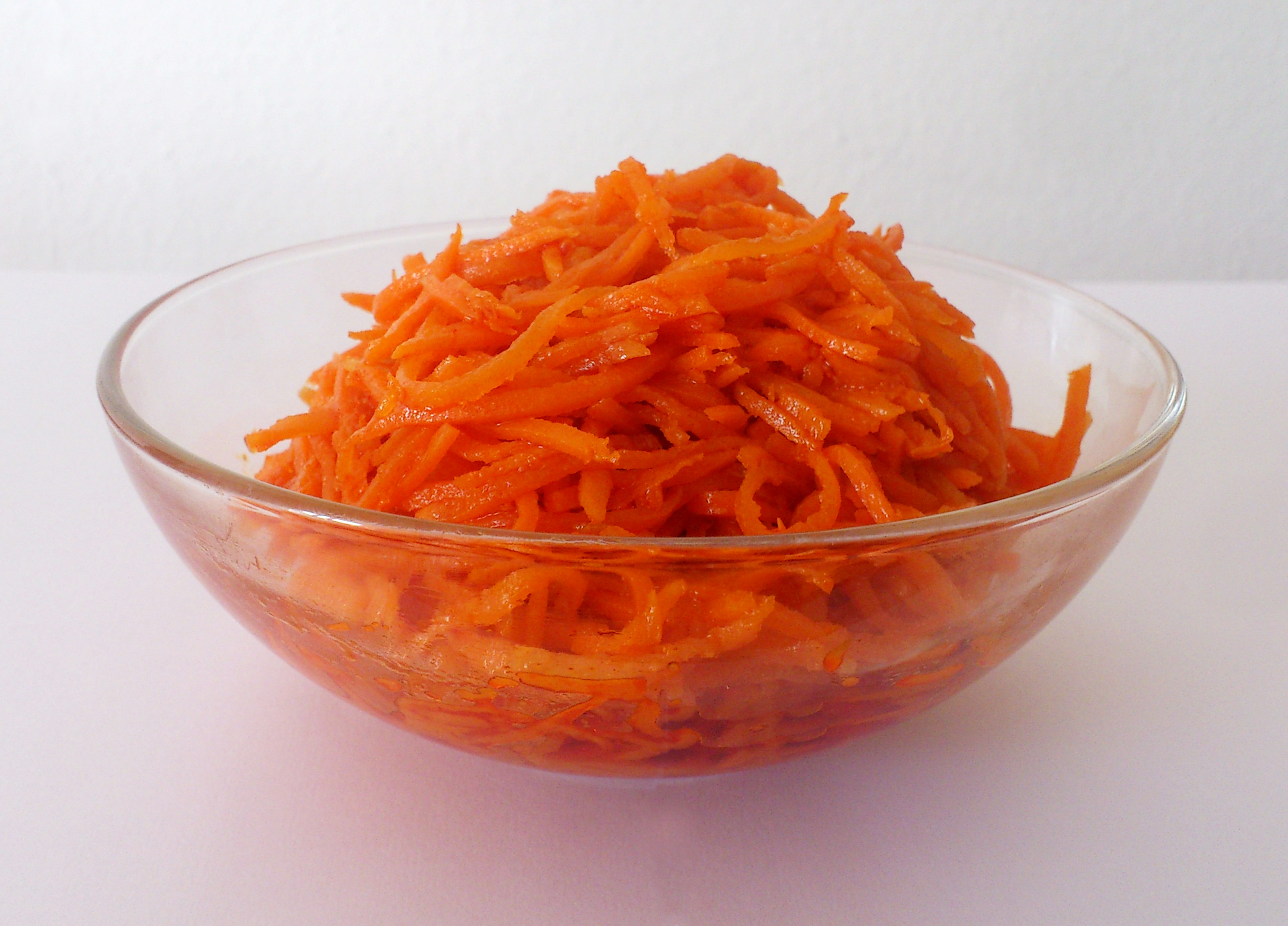Morkovcha on:
[Wikipedia]
[Google]
[Amazon]
 Morkovcha (
Morkovcha (
 Koryo-saram (ethnic Koreans located in post-
Koryo-saram (ethnic Koreans located in post-
 Morkovcha (
Morkovcha (Koryo-mar
, , or ( ko, Ļ│ĀļĀżļ¦É, russian: ąÜąŠčĆčæ ą╝ą░čĆ), otherwise known as () by speakers of the dialect, is a dialect of Korean spoken by the Koryo-saram, ethnic Koreans in the countries of the former Soviet Union. It is descended from the Hamgy┼ ...
: /), also known as Korean-style carrots (russian: ą╝ąŠčĆą║ąŠą▓čī ą┐ąŠ-ą║ąŠčĆąĄą╣čüą║ąĖ, morkov' po-koreyski) or Korean carrot salad ( uz, koreyscha sabzili salat), is a spicy marinated carrot salad
Carrot salad is a salad made with carrots. Recipes for carrot salad vary widely by regional cuisine. Shredded carrot is often used. Shredded carrot salads are often used as a topping for other dishes.
By country
Carrot raisin salad is a tradi ...
. It is a Koryo-saram
Koryo-saram ( ko, Ļ│ĀļĀżņé¼ļ×ī; russian: ąÜąŠčĆčæ čüą░čĆą░ą╝; uk, ąÜąŠčĆčīąŠ-čüą░čĆą░ą╝) is the name which ethnic Koreans in the post-Soviet states use to refer to themselves. The term is composed of two Korean words: "", a historical name for ...
variant of kimchi
''Kimchi'' (; ko, Ļ╣Ćņ╣ś, gimchi, ), is a traditional Korean side dish of salted and fermented vegetables, such as napa cabbage and Korean radish. A wide selection of seasonings are used, including ''gochugaru'' (Korean chili powder), sprin ...
.
History
 Koryo-saram (ethnic Koreans located in post-
Koryo-saram (ethnic Koreans located in post-Soviet
The Soviet Union,. officially the Union of Soviet Socialist Republics. (USSR),. was a List of former transcontinental countries#Since 1700, transcontinental country that spanned much of Eurasia from 1922 to 1991. A flagship communist state, ...
countries) created the dish as they did not have supplies of Baechu cabbage, the main ingredient in traditional kimchi. In Central Asia, where many Koryo-saram have lived since the deportation of 1937, the salad is also named morkovcha, which is a combination of Russian ''morkov'' ("carrot") and Koryo-mar
, , or ( ko, Ļ│ĀļĀżļ¦É, russian: ąÜąŠčĆčæ ą╝ą░čĆ), otherwise known as () by speakers of the dialect, is a dialect of Korean spoken by the Koryo-saram, ethnic Koreans in the countries of the former Soviet Union. It is descended from the Hamgy┼ ...
''cha'', derived from Korean ''chae'' () meaning salad-type banchan
''Banchan'' (, from Korean: ) or bansang are small side dishes served along with cooked rice in Korean cuisine. As the Korean language does not distinguish between singular and plural grammatically, the word is used for both one such dish or ...
. The salad was unknown in South Korea until recently, when Russo-Koreans' return migration as well as Russian and Central Asian immigration became common. However, it has gained an international following, being served in most cafeterias throughout post-Soviet countries, sold in many supermarkets, and featured regularly as an appetizer ( zakuska) and a side dish on dinner tables and in holiday feasts set by all ethnicities of the former Soviet Union.
Ingredients
The typical ingredients are finely julienned carrots,garlic
Garlic (''Allium sativum'') is a species of bulbous flowering plant in the genus ''Allium''. Its close relatives include the onion, shallot, leek, chive, Allium fistulosum, Welsh onion and Allium chinense, Chinese onion. It is native to South A ...
, onion, ground red pepper, ground coriander
Coriander (;
seeds, vinegar
Vinegar is an aqueous solution of acetic acid and trace compounds that may include flavorings. Vinegar typically contains 5ŌĆō8% acetic acid by volume. Usually, the acetic acid is produced by a double fermentation, converting simple sugars to et ...
, vegetable oil, salt and pepper. It may also include sesame seed
Sesame ( or ; ''Sesamum indicum'') is a flowering plant in the genus ''Sesamum'', also called benne. Numerous wild relatives occur in Africa and a smaller number in India. It is widely naturalized in tropical regions around the world and is cu ...
s.
See also
* * * * *References
{{Salads Carrot dishes Central Asian cuisine Kimchi Russian Korean cuisine Salads Soviet cuisine